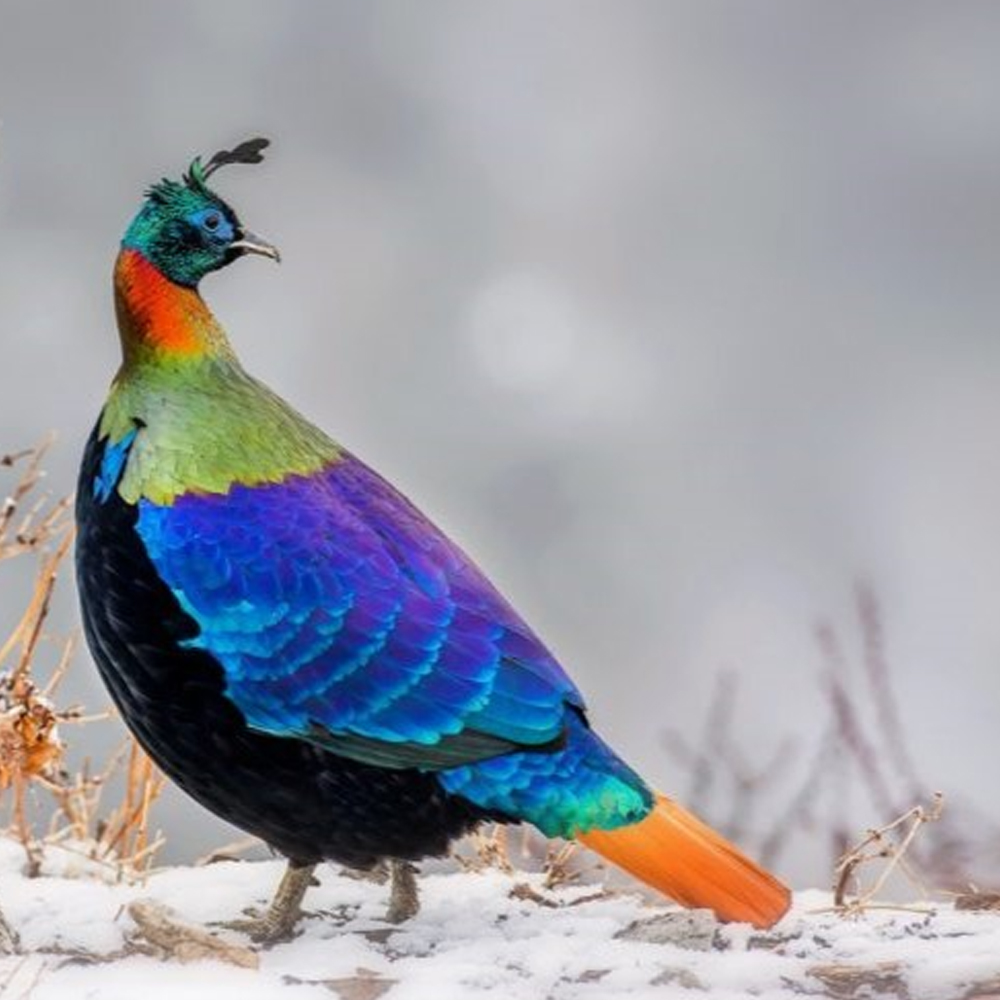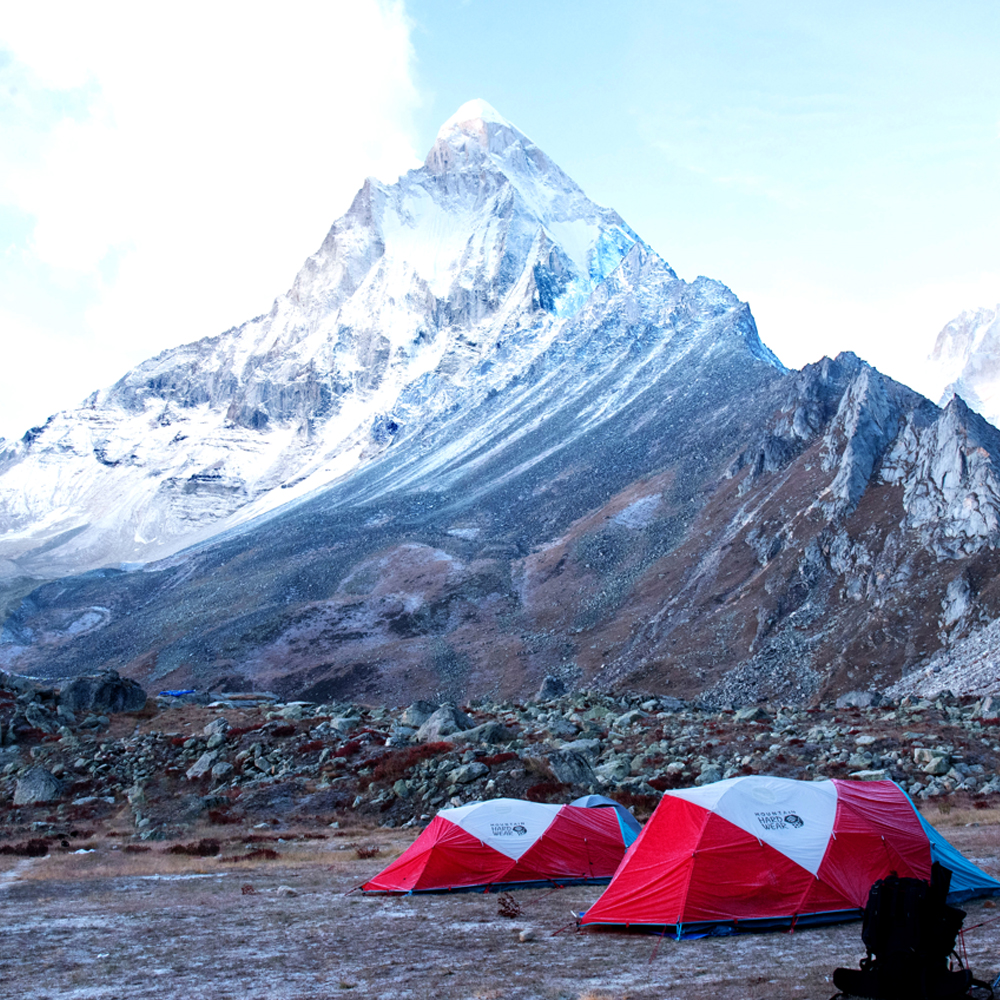The feathered chirpy creature that is the master of void with the freedom of sky was not content to be landbound in its ancestral form. Hence, metamorphosed itself evolutionarily in order to be buoyant to fly, whiz, swoop, surprise and most importantly delight the birders with their bedizened delicate feathers of various hue, patterns and ostentation. With such evolutionary advancement, bird is capable of exploiting a niche that would have otherwise been inaccessible with its enormous, scally and cumbersome primitive form. However, despite the presence of wings and feathers, a few species have taken aberrant evolutionary trajectory and adopted to be landbound in many parts of the Southern hemisphere, owing to the absence of predators in their neighbourhood. But most species around the globe have achieved many feats on the wings.The bird has not only inspired human imagination and scientific invention but delighting us with their thrilling diversity, ostentatious feathers, intricate behaviour and sheer ingenuity.The list of amazement is endless, to name a few are: the airborne swifts only touch ground to nest, piscivorous Osprey’s fascination to follow the fish map of the world, Peregrine Falcone’s fastest diving bird tag, Bee hummingbird’s fastest wingbeat of 80 times/ second phenomenon and Arctic tern never spending time in winter climate by flying 80,000 miles in a year aren’t sufficient to amaze us?A hobby that is known as bird-watching or birding was coined in early 20th century for a recreational activity. A sport, that used to be an elegant pastime of a few rich people is now delighting enthusiast the world over to watch birds either naked eyed or with sophisticated visual-aids such as binocular or spotting scope. The volumes on the birds used to be heavy folios finely printed on thick paper with rich binding but poorly illustrated literature. The crude drawing and colouring that had curiosity and charm often fetched top bucks in the market.However, it was Audubon, John Gould and Dr. Salim Ali of India, who revolutionised the birding sport to next level. Today, from cumbersome filed guides of yore we have arrived at the digital version soft copies of bird literature with precise drawing, distribution map, crisp detail on each bird with their calls too can be accessed on smart phones.Hence with so much advancement in illustration, the birdwatching industry has ballooned into a considerable commerce. Tour operators, optic manufacturers, and activity resorts are all offering guided services, paraphernalia, infrastructure, itineraries and opportunity to catch the glimpse or capture these ubiquitous feathery creatures on camera equipment wherever and whenever possible.We all dream and travel far-flung reaches to observe and share our finding with the like-minded folks who are either wanting to see them over and over again or yet to add more species in their list or wishing to capture them to cherish the moment. Birds are all-time entertainer as they are ubiquitous, chirpy to register their presence and always up to somethingIndia being part of Oriental and Palearctic zoogeographical region, has great bird diversity in varied habitats: from Island to coast, rainforest to Desert, from Deccan Plateau to flood plains and Mangrove to Himalayas. Hence, a lifetime would however fall short to explore such expanse and diversity. But, most of our journey to explore them starts with backyard birding and the pursuit is interminable that take us anywhere and everywhere.We, the team of Himalayan Peregrinators, having close to two-decade long exposure to the Central Indian landscape, Terai region and Himalayas, are the students till our last breath and keen observer of wildlife found in these landscapes. We spend hours, walk miles, shove ourselves through impenetrable thorny bushes, scramble steep slopes, wade chilly Himalayan brooks, tolerate marauding leaches, starve for many meals and bear every element of outdoors but never stop exploring bird’s secret world in our pursuit to find more, know more, see more and to be better in the field. We believe that a lifetime is short to explore the intricate network of Terai and montane forest of Himalaya, where ascent and descent is inevitable in order to cover ground and maximize our chances of seeing and finding different species. The rugged terrain of the turf where we mostly operate, multiplies the challenge manifold to chase the birds of our dreams.The birds are notorious for taking beeline from tree to tree and hill to hills, no matter how skilled a birder is to home-in on the flitting feathery beauties, they always pose a challenge in Himalayas. They tease us from the sky torpedoing tall trees. Hence, birds play peekaboo before you really manage to find them. But trust us the reward is worth chasing as the species range from ostentatious Monal to Western Tragopan, mousy scally babblers to range of flamboyant woodpeckers who tend to advertise their presence with repeated drumming as well as knock-knock on wood. If one is fascinated by the size of birds, Himalayan vulture, Bearded vulture and Aquila eagles are known to fly along the hill slope to exploit the passing breeze. They will surely tantalize one to touch them as they often fly a kissing distance away at or below eye level and catch your attention with swishing sound produced by repeated spreading and tucking of their wings during flightBirding is great way to see the nature as well as locale on foot. It opens your door to the new world and give you chance to observe bird’s cognitive ability from fledgling to adulthood that involves flight, mate-recognition, nest-building, learning celestial cue for migration and other conspicuous behaviours. Self-maintenance behaviour of birds such as preening provides best opportunity to get closer look at them and capture on camera. They spend considerable amount of time and energy to keep their feathers in best possible condition by preening to unzip, straighten and smoothen tangled feathers regularly with their beak. Preening is usually done to remove grass seeds or glued up tree sap to be prepared to escape marauding raptors. Preening is an important exercise and usually done at a perch for longer duration after morning spell of feeding or at Sunrise on wintry morning.Birds are also known to take dust bath on dusty forest track or get some formic acid on their feathers by laying on ant mound to get rid of parasites.Fruiting trees or trees in bloom can be a best market place for birds where numerous species congregate to exploit the short-lived bounty of nature On many occasions mixed hunting parties can be seen feeding together at the different story of the forest and benefit from each other’s combine effort.
India is unique for bird-watching destination due to overlap in two geographical regions. Hence great place to set out to look for birds of all possible hue and ostentation. Birds in Palearctic region tend to be a bit humble coloured whereas the birds of Oriental region are brightly coloured to find mate and advertise their presence. Himalayan mountain chain that defines the northern boundary of Oriental region, remain the least spoiled of the world’s wilderness. Hence the pheasant family is particularly well distributed and diverse here. It boasts with Ostentatious Monal, Western Tragopan, Kalij pheasant, Koklas, chir pheasant etc.Fire tailed sunbird that is only found in the Himalayan Forest is a bird to look for. Blood pheasant that live above 14000 feet is another jewel in Himalayas, Bar headed gees that is known to fly above Everest is stunner.What type of birder are you? Drop us an email or WhatsApp message we will tailor a program for you
Himalayas – An Arena of Escapades
A mega tectonic event that simmered for millennia, propelled an itinerant landmass of Indian subcontinent towards present day’s Asia on a sluggish time scale. In due course, this drifting gargantuan earth plate, fired by a monomania to explore the possibilities of unique creation, eventually collided with Asian plate with unimaginable force about 50 million years ago. This tectonic collision led to the creation and rise of the world’s highest and youngest mountain range “The Himalaya”. The fact that Himalayas continues to rise inexorably till date by a few millimeters every calendar year, alludes that this particular sphere of earth is explorer and adventurer in nature with tremendous active fire in its belly for the new possibilities. The network of thundering rivers, abundance of hydrothermal springs, brimming cerulean lakes and moisture loaded clouds those are tossed around the fluted ramparts of the king of the mountain, are the byproduct of tremendous toil that the Himalaya had been up to for Aeon. Itinerant Indian plate further panned shallow Tethys Sea, obliterating it to form Tibetan Plateau that is sere, desiccated and surprisingly interesting landform for explorers to tread upon and wonder in awe.Occasional seismic spasm the Himalaya keeps experiencing, reminds us its dynamism. The dynamic nature of the Himalayas can also be experienced in its rollicking rivers, strong winds riffling musical rendition from the foliage of Himalayan Forest and from the towering spires jutting beyond clouds. All inspiring us to set the goals high and never stop exploring and seeking. Himalaya is also a treasure trove of the nature’s marvel. From cradling world’s second greatest stockpile of ice outside polar region to the word’s ten highest peaks. It forms a unique bionetwork in its back and beyond landscapes for explorer to seek what they crave for.Himalayas intercepts and squeezes the itinerant moisture laden cloud with its towering barrier to let Tibetan plateau remain a dry wonderland. At the same time forces the billowing clouds to shower their bounty on a landscape to its south all the way to Sri Lanka and beyond. Thus, imparting Indian landmass with a dash of green for many months, amazing network of rivers and vast flood plains. It probably functions in such a manner to impart an assorted menu of travel possibilities to choose from and satiate explorer’s thirst with its environmental and geological interplayAlthough the length and breadth of India offers incredible array of magnificent tourist destinations, but, this slice of elysian land on earth “Himalaya” is blessed with awe inspiring beauty of galactic isolation, tectonic built colossal architect with panoramic march of sky kissing peaks, matrix of glens offering excellent labyrinth of trekking routs, meandering waterway with excellent opportunities to drift on a flotilla, network of extraordinary habitats to look for the wildlife of your dream, abundance of forest pools and tarn to swim, luminous sky to star gaze, seldom visited pastoral valleys to camp on, heart-stopping vistas of resplendent snowy summits to soak in, unassuming people of bucolic cultures with transhumance tradition to witness and a true melting pot of polytheist, monotheist and natural law religion (Hinduism, Islam and Buddhism). A jaunt to such landscape is sure to leave an indelible impression on your life. With so much to do in one landscape, a visitor is surely hard press to find an alternate.While exploring Himalayan valleys and passes, the explorers are mesmerized and left spellbound to the extent that they hardly feel the toil they have been going through. While visitors feast their senses, quieten their mind, tickle their soul in its lap, Himalayas covertly works on their fitness form very first leg of journey. No place on earth can be so fascinating with multifrontal dimensions for travelers as Himalayas. It allows you to revel in it, refreshes you to the core and at the same time discreetly leaves you fitter physically as well as mentally towards the end your visit.


